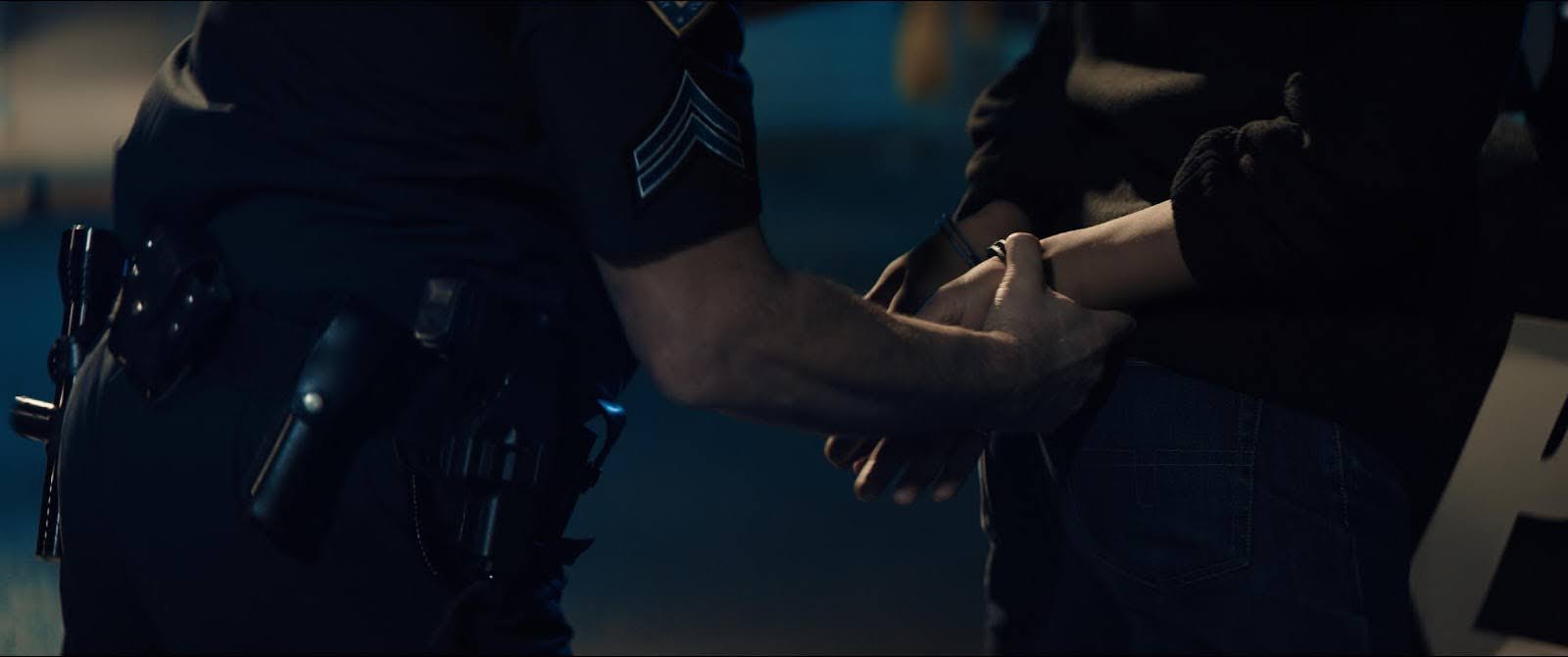Understanding Arizona Violent Crimes

Facing Arizona violent crime charges is overwhelming. The legal system is complex and can be intimidating. Understanding the specifics of the crime and the potential penalties if convicted are important steps in navigating the legal system.
Lawyer Listed created this guide to provide you with a detailed overview of the most common Arizona violent crimes. It explains key terms and sentencing guidelines. It also answers frequently asked questions about these charges.
Remember, this information is for educational purposes only and is not a substitute for legal advice from an experienced Arizona criminal defense lawyer. If you are facing Arizona violent crime charges, consult with a qualified Arizona violent crimes attorney as soon as possible. Lawyer Listed simplifies this process by matching you with an elite criminal defense lawyer tailored to your case.
Key Concepts of Arizona Violent Crimes:
- Intentionally or with intent to means that there was an objective to cause a result or engage in a specific conduct. In other words, you meant to do it.
- Knowingly means that you were aware of your actions or the circumstances that make up the offense. It doesn’t require that you knew your conduct was illegal; you just needed to be conscious of what you were doing or the situation you were in.
- Reckless means being aware of and willfully disregarding a substantial and unjustifiable risk, which results in harmful consequences.
- Deadly weapon means anything designed to kill, like a firearm.
- Dangerous instrument means anything that under the circumstances in which it is used, attempted to be used or threatened to be used is readily capable of causing death or serious physical injury.
- Dangerous offense means an offense involving the discharge, use or threatening exhibition of a deadly weapon or dangerous instrument or the intentional or knowing infliction of serious physical injury on another person.
Assault: ARS 13-1203

ARS assault charges in Arizona are defined under ARS 13-1203. Charges of simple assault, also known as misdemeanor assault Arizona, fall into one of the follow categories:
- Intentionally, knowingly, or recklessly cause physical injury to another person
- Intentionally place another person in reasonable fear of immediate physical injury
- Knowingly touch another person with intent to injure, insult, or provoke
Penalties for ARS Assault
The penalties for misdemeanor assault depend on the class of the conviction. Factors like the victim’s injuries and your criminal record can influence the final sentence. The following table summarizes the range of assault offenses:
| Class of Assault | Description | Jail Time (max) | Probation (max) |
|---|---|---|---|
| Class 1 misdemeanor | Intentionally causing an injury to another person | 6 months | 3 years |
| Class 2 misdemeanor | Acting recklessly, leading to minor injuries, or causing someone to fear harm | 4 months | 2 years |
| Class 3 misdemeanor | Minor, unwanted contact meant to provoke or annoy someone | 30 days | 1 year |
Frequently Asked Questions (FAQs)
A: No. An assault charge does not require an injury. If you make someone reasonably afraid that you are about to injure them, that can be enough for an assault charge. Touching someone to provoke or insult them can also lead to a charge.
A: Assault charges require intent or recklessness. You can be charged with assault even if the injuries were accidental if your actions were reckless. The charge depends on your state of mind when the act occurred.
Aggravated Assault: ARS 13-1204

ARS aggravated assault under ARS 13-1204 is a felony charge that occurs when simple assault escalates and involves any of the following aggravating factors:
- Serious physical injury: injuries that can lead to death, permanent disfigurement, or significant bodily harm.
- Use of a deadly weapon or dangerous instrument: a weapon designed to kill or an instrument capable of causing serious injury or death in the circumstances used.
- Temporary but serious disfigurement, loss, or impairment: serious but temporary physical harm. Examples include deep scars, temporary loss of function in a body part, or a broken bone.
- Assault while victim is restrained or helpless: a victim who is physically restrained, significantly impaired, or under 15 years old.
- Assault in a private home: an intentional assault after unlawfully entering someone’s home.
- Assault in violation of a protection order: assaulting someone when a court order prohibits contact.
- Assault on a Protected Individual: attacking protected individuals like police officers, firefighters, teachers, healthcare workers, and prosecutors.
Penalties for ARS Aggravated Assault
Penalties for aggravated assault are severe and vary greatly depending on the seriousness of the injuries, use of a weapon, and the victim’s status.
| Felony | Description | Prison (years) |
|---|---|---|
| Class 2 | Involves the use of a deadly weapon or dangerous instrument or causing serious physical injury in the assault of a police officer, peace officer, prosecutor, or minor. | 7 – 21 |
| Class 3 | Involves the use of a deadly weapon or dangerous instrument, causing serious physical injury, or causing temporary but substantial disfigurement to a protected person. | 5 – 15 |
| Class 4 | Involves serious injury or significant temporary disfigurement. | 4 – 8 |
| Class 5 | Involves assaulting a protected person without causing serious injury. | 2 – 4 |
| Class 6 | Involves assaults on helpless victims or assaults in a private home. | 1.5 – 3 |
Frequently Asked Questions (FAQs)
A: Simple assault is a misdemeanor. Aggravated assault is a felony and involves additional aggravating factors like a weapon, dangerous instrument, or serious injury.
A: Acting in self-defense is a valid defense. You must prove that you believed that you or another person was in immediate danger of being harmed, the force you used was reasonable and necessary to prevent the harm, and your self-defense actions were reasonable relative to an average person in the same situation.
Endangerment: ARS 13-1201

Endangerment ARS charges involve recklessly endangering another person, resulting in a substantial risk of imminent death or physical injury. Endangerment focuses on the creation of risk, not whether someone was actually harmed.
Key Elements of ARS Endangerment
- Recklessness: You acted without regard for the potential dangers of your actions.
- Substantial Risk: The risk of harm was significant, not a remote possibility.
- Imminent Death or Physical Injury: The potential harm was immediate or about to happen.
Categories of Endangerment ARS Charges
Endangerment Arizona charges are divided into two classes based on the perceived risk.
- Endangerment Involving Substantial Risk of Imminent Death
- Endangerment with Substantial Risk of Physical Injury
Penalties for ARS Endangerment
The penalties for endangerment depend on the specific charge, your criminal history, and the circumstances of the crime.
| Charge | Class | Prison/Jail | Probation (max) |
|---|---|---|---|
| Endangerment: Risk of death | Class 6 Felony | Prison: 0.33 – 2 years | 3 years |
| Endangerment: Risk of injury | Class 1 Misdemeanor | Jail: up to 6 months | 3 years |
Frequently Asked Questions (FAQs)
A: "Substantial risk" isn't precisely defined with a numerical percentage. Instead, courts consider the likelihood of harm in relation to the circumstances. The prosecution must prove that the risk was significant enough that a reasonable person would have foreseen the potential for serious injury or death.
A: Yes. Endangerment focuses on the risk of harm, not whether harm occurred. If the prosecution can prove you created a substantial risk of imminent death or serious physical injury, you can be convicted even if no one was hurt.
Stalking: ARS 13-2923

Arizona stalking laws under ARS 13-2923 define stalking as intentionally or knowingly engaging in conduct directed at another person that causes emotional distress or reasonable fear for safety. Stalking laws in Arizona require a pattern of behavior, not just a single incident.
Key Elements of ARS Stalking
ARS stalking charges require a course of conduct, which may include:
- Maintaining visual or physical proximity to someone repeatedly
- Directly threatening someone verbally or in writing on multiple occasions
- Using electronic devices for unauthorized surveillance
- Continuous or repeated surveillance over time
Penalties for ARS Stalking
Sentencing for ARS stalking depends on the nature of the threat.
| Charge | Felony | Prison | Probation (max) |
|---|---|---|---|
| Victim reasonably fears death for themselves or someone close to them | Class 3 | 2 – 8.75 years | 5 years |
| Victim reasonably fears serious harm for themselves or someone close to them | Class 5 | 0.5 – 2.5 years | 3 years |
Frequently Asked Questions (FAQs)
A: Arizona stalking laws protect victims and extend to their family members, pets, romantic partners, and anyone who has lived with them in the past six months.
A: "Reasonable fear" is judged based on the totality of circumstances. Factors considered include the nature of the actions, the relationship between the individuals involved, the victim's perception of the threat, and the likelihood of the threat occurring.
Harassment: ARS 13-2921

ARS Aggravated Harassment (ARS 13-2921)
Harassment ARS charges involve conduct directed at a specific person that would cause a reasonable person to feel seriously alarmed, annoyed, humiliated, or mentally distressed. Arizona harassment laws require the harassing conduct to actually cause such distress.
Types of Harassment
ARS harassment involves knowingly and repeatedly committing acts that harass another person, including:
- Making unwanted contact through verbal, electronic, mechanical, or written means
- Continuing to follow someone in public after being asked to stop
- Surveilling another person
- Filing false reports to law enforcement, credit, or social services
- Interfering with delivery of public or regulated utilities.
Aggravated Harassment (ARS 13-2921.01)
Harassment escalates to aggravated harassment if the harassing actions are committed while a court protection order is in effect, with prior harassment convictions, prior domestic violence conviction against the victim, or when release conditions prohibit victim contact.
Penalties for ARS Harassment
Sentencing for ARS harassment depends on the nature of the harassment.
| Charge | Class | Prison/Jail | Probation (max) |
|---|---|---|---|
| Aggravated Harassment: Repeat offender | Class 5 Felony | Prison: 0.5 – 2.5 years | 3 years |
| Aggravated Harassment: Prior domestic violence offense | Class 5 Felony | Prison: 0.5 – 2.5 years | 3 years |
| Aggravated Harassment: Repeat offender | Class 6 Felony | Prison: 0.33 – 2 years | 3 years |
| Harassment | Class 1 Misdemeanor | Jail: up to 6 months | 3 years |
Frequently Asked Questions (FAQs)
A: Yes, harassment charges can be filed based on the risk of harm and the distress caused to the victim, even if no physical harm occurred.
A: Orders of protection, injunctions against harassment, and emergency protective orders.
Resisting Arrest: ARS 13-2508

ARS resisting arrest is intentionally preventing or attempting to prevent a law enforcement officer from making an arrest. Resisting arrest ARS charges can occur in several ways and do not require successfully preventing the arrest.
Types of Resisting Arrest
- Using or Threatening Physical Force: Any act of physical force or believable threat against a police officer or another person.
- Creating Substantial Risk of Injury: Actions creating substantial risk of physical harm to officers or others, even without direct force.
- Passive Resistance: Nonviolent actions meant to delay or hinder arrest.
Penalties for ARS Resisting Arrest
Sentencing for ARS resisting arrest depends on the severity of the resist.
| Charge | Class | Prison/Jail | Probation (max) |
|---|---|---|---|
| Using or threatening physical force | Class 6 Felony | Prison: 0.33 – 2 years | 3 years |
| Creating substantial risk of injury | Class 6 Felony | Prison: 0.33 – 2 years | 3 years |
| Passive resistance | Class 1 Misdemeanor | Jail: up to 6 months | 3 years |
Frequently Asked Questions (FAQs)
A: Yes, you can be charged with resisting arrest regardless of whether the initial arrest was legal. The focus is on your actions in response to the attempted arrest.
A: Passive resistance refers to nonviolent physical acts or failure to act that are intended to impede, hinder, or delay an arrest. Examples include refusing to put your hands behind your back or exit your vehicle.
Unlawful Imprisonment: ARS 13-1303

ARS unlawful imprisonment under ARS 13-1303 involves knowingly restraining another person without legal justification. Unlawful imprisonment Arizona charges require the intentional deprivation of someone’s freedom of movement.
Key Elements of ARS Unlawful Imprisonment
To convict you of unlawful imprisonment, the prosecution must prove:
- You knowingly restrained another person (aware of your actions and their effect)
- The restraint was unlawful (not authorized by law like lawful police arrest)
The length of restraint isn’t the determining factor – even short periods of restraint can lead to unlawful imprisonment charges.
Penalties for ARS Harassment
Sentencing for ARS harassment depends on the nature of the harassment.
Frequently Asked Questions (FAQs)
A: Acting in good faith in the lawful performance of duty by a peace officer or a detention officer is a valid defense against unlawful imprisonment charges.
A: It is a valid defense if you restrained a relative, without injury, intending to assume lawful custody of the person.
Child Abuse: ARS 13-3623

ARS child abuse, under ARS 13-3623, involves conduct that poses a risk of death or serious physical injury to a child. The law applies to individuals responsible for a child’s care, as well as those who knowingly, recklessly, or negligently cause or permit the child to be harmed.
Arizona child abuse laws prohibit both physical harm and substantial threats to the child’s overall well-being, including direct actions that inflict harm and failures to act that result in a child’s exposure to danger.
Types of Child Abuse
- Physical Injury
- Serious Physical Injury
- Emotional Abuse
- Sexual Abuse or Assault
Penalties for ARS Child Abuse
Arizona’s child abuse sentencing under ARS 13-3623 depends on the victim’s age, the severity of the abuse, and your mental state.
Category 1 Abuse:
Child abuse that is likely to cause death or serious physical injury to a child is the most serious under Arizona child abuse laws. Category 1 child abuse is summarized below:
Arizona child abuse laws prohibit both physical harm and substantial threats to the child’s overall well-being, including direct actions that inflict harm and failures to act that result in a child’s exposure to danger.
Types of Child Abuse
- Physical Injury
- Serious Physical Injury
- Emotional Abuse
- Sexual Abuse or Assault
| Offense | Class | Prison (years) |
|---|---|---|
| Intentional or knowing abuse of a child under 15 | Class 2 felony (DCAC) | 10 – 24 |
| Intentional or knowing abuse of a child 15 or older | Class 2 felony | 3 – 12.5 |
| Reckless abuse of a child | Class 3 felony | 2 – 8.75 |
| Negligent abuse of a child | Class 4 felony | 1 – 3.75 |
Category 2 Abuse:
Child abuse that is not likely to cause death or serious physical injury to a child is a lesser crime under Arizona child abuse laws. Category 2 child abuse is summarized below:
| Offense | Class | Prison (years) |
|---|---|---|
| Intentional or knowing abuse of a child | Class 4 felony | 1 – 3.75 |
| Reckless abuse of a child | Class 5 felony | 0.5 – 2.5 |
| Negligent abuse of a child | Class 6 felony | 0.33 – 2 |
Frequently Asked Questions (FAQs)
A: "Physical injury" refers to general harm like bruises, burns, or dehydration. "Serious physical injury" involves major harm—like a risk of death, permanent damage, or loss of organ or limb function.
A: Yes, under ARS 13-3623, you can be charged if you had custody of the child and permitted or failed to prevent the abuse, even without directly inflicting harm.
Kidnapping: ARS 13-1304

ARS kidnapping under ARS 13-1304 defines the crime as knowingly restraining another person with specific intentions. Arizona kidnapping charges depend on the intent behind the restraint and the specific circumstances surrounding the restraint.
Intent of ARS Kidnapping
Kidnapping charges in Arizona require restraining someone with intent to:
- Hold victim for ransom, as shield, or hostage
- Hold victim for involuntary servitude
- Inflict death, physical injury, or sexual offense, or aid in felony
- Place victim or third person in reasonable fear of immediate physical injury
- Interfere with governmental or political function
- Seize or control aircraft, train, bus, ship, or other vehicle
Penalties for ARS Kidnapping
Sentencing for ARS kidnapping depends on the circumstances of the offense. The following table summarizes the potential sentencing ranges for kidnapping in Arizona.
| Felony | Description | Prison (years) |
|---|---|---|
| Class 2 (DCAC) | Victim under the age of 15 | 10 – 24 |
| Class 2 | Completion of intentions above. Victim not voluntarily released, released in an unsafe place, or injured during kidnapping. | 3 – 12.5 |
| Class 3 | Victim is released pursuant to an agreement with the state and without physical injury. | 2 – 8.75 |
| Class 4 | Victim is released voluntarily, in a safe place, before arrest, and without physical injury. | 1 – 3.75 |
Frequently Asked Questions (FAQs)
A: Restraint means restricting a person's freedom of movement without their consent. This could be physical confinement, threats, or any other form of coercion. Restraint does not require abduction - holding someone against their will in any way could constitute kidnapping.
A: Yes, even a short period of restraint constitutes kidnapping if the prosecutor proves the requisite intent.
Drive By Shooting: ARS 13-1209

Arizona drive by shooting under ARS 13-1209 involves intentionally firing a gun from a vehicle at a person, another car, or a building with people inside. A drive by shooting is a serious felony offense even if no one is hurt.
Penalties for ARS Drive By Shooting
Sentencing for ARS drive by shooting depends on the circumstances of the offense.
| Felony | Description | Prison (years) |
|---|---|---|
| Class 2 | Dangerous offense based on the use of a deadly weapon | 7 – 21 |
Frequently Asked Questions (FAQs)
A: Yes, you can be charged. Under Arizona law, you can be held criminally liable for the actions of another person if you are considered an accomplice. This includes being in the car during a drive-by shooting, even if you were not the one who fired the weapon.
A: The car used in a drive by shooting is subject to seizure and forfeiture by the state.
Armed Robbery: ARS 13-1904

ARS armed robbery under ARS 13-1904 is an escalation of a simple robbery. Robbery involves taking property from another person—either directly or from nearby—without permission and using or threatening force to make the person give it up or stop them from resisting. Armed robbery Arizona charges require the commission of a robbery with one of the following aggravating factors.
Elements of Armed Robbery
Armed robbery occurs if you commit robbery and one or more of the following factors exist:
- You are armed with a deadly weapon or simulated deadly weapon
- You use or threaten to use a deadly weapon or dangerous instrument
- You take possession of or attempt to take possession of a deadly weapon during robbery
The presence of a deadly weapon, even if not used, elevates the charge.
Penalties for ARS Armed Robbery
Sentencing for ARS armed robbery depends on the circumstances of the offense.
| Felony | Description | Prison (years) |
|---|---|---|
| Class 2 | Dangerous offense based on the use of a deadly weapon | 7 – 21 |
Frequently Asked Questions (FAQs)
A: No, the victim does not need to feel threatened. The mere presence of a deadly weapon or simulated weapon during the robbery is enough for a conviction.
A: Both armed robbery and aggravated robbery involve using or threatening force during a robbery, but armed robbery specifically includes the presence or use of a deadly weapon—even a fake one—which makes it the most severe type, while aggravated robbery escalates the crime due to additional factors like serious injury to the victim, involvement of accomplices, or a prior criminal conviction.
Next Steps:

Arizona violent crimes are serious charges with serious consequences. The charges and the resulting sentence depend on many factors. Lawyer Listed meets you where you are and helps you understand the law and your rights to effectively get through this difficult situation.
If you’re facing Arizona violent crime charges, engaging a skilled violent crimes attorney is essential to protect your rights and manage the process. Don’t try navigating the legal system alone; match with your ideal lawyer at LawyerListed.com and get an experienced criminal defense attorney on your side right away.
